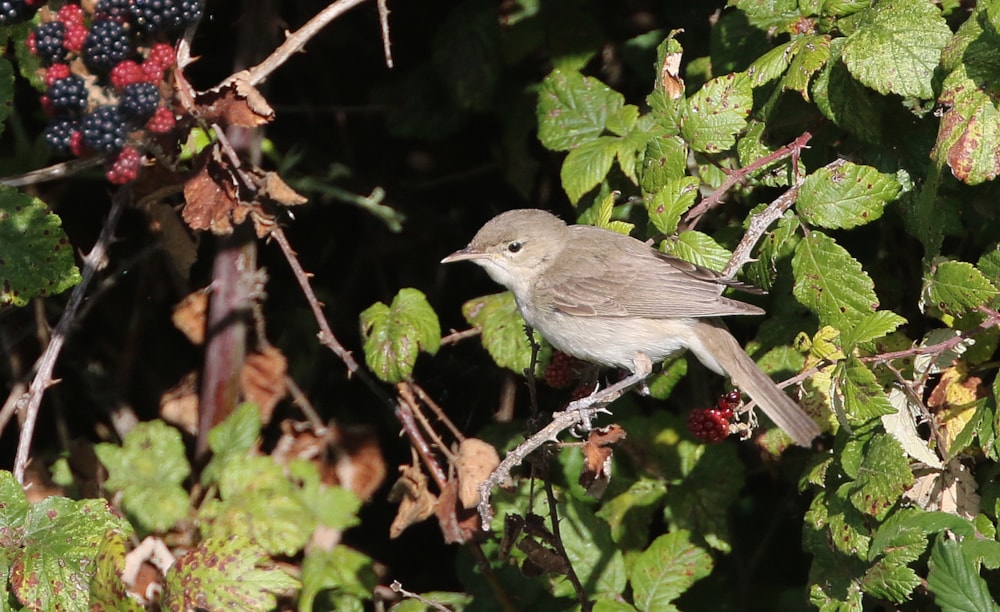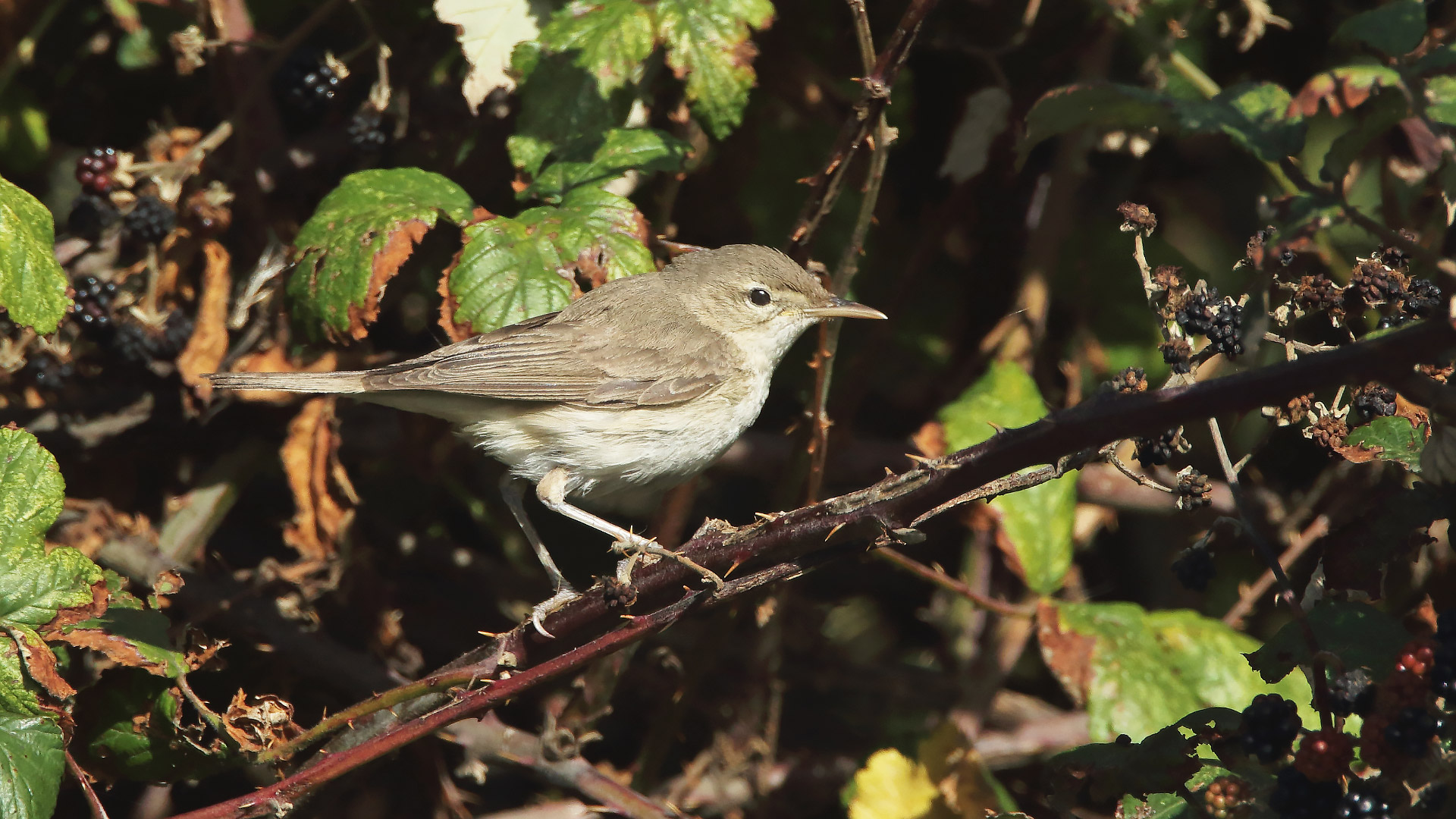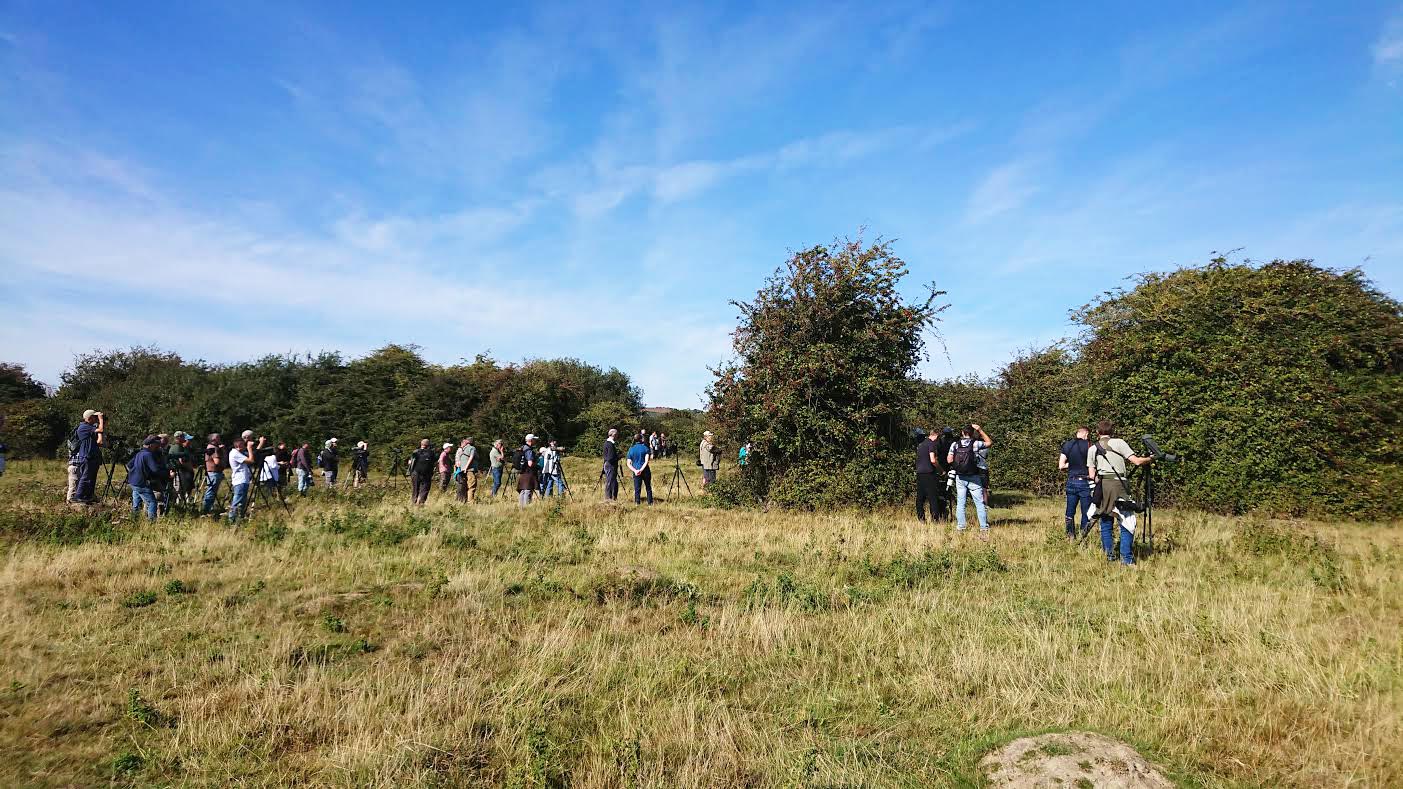The weather was forecast to be fine on Saturday 14 September, so I was keen to get out birding. My usual companions were unavailable, so I defaulted to a morning visit to Farlington Marshes. Arriving a little after 9 am, I took a route through the western section of 'the bushes', an area of scrub which often holds passerine migrants. It was just before 10 am when, as I approached a tall bramble-smothered hawthorn, I picked up a pale warbler close to ground level.
I was immediately struck by how pale and plain looking it was and thought I could hear a tack call coming from the bird. I moved forward a few paces so that I could determine whether it was the pale warbler that was calling – it was, and not only that the bird was pumping its tail downwards as it called. The adrenaline started to kick in.

Peter's immediate impression was of a plain and pale warbler that gave a 'tack' call while pumping its tail downwards, as shown here (Jon Mercer).
I was convinced it was something good, but the only features noted were a plain face, whitish underparts, uniform grey brown upperparts, a long-looking pale bill and just a suggestion of a square-ended tail. The warbler quickly moved to the top of the bush, then flicked up and over. I waited a few minutes but it seemed I had lost touch.
At this point I realised I needed help so called Farlington Marshes stalwart Jason Crook, thinking he would be on the marsh – he wasn't, so I left him with the news that I thought it could be a Blyth's Reed Warbler but hadn't ruled out a grey Hippolais.
Next I tried Tim Doran, another Farlington regular. He wasn't on the marsh either, but was only a few miles away. Ten minutes later he arrived and we split up to try and relocate the bird. The day was already warming and bird activity reducing. I was beginning to regret pushing the button.
Fortunately, Jason had persuaded Andy Johnson to pick him up, and they arrived to join the search at around 10.30 am. Just as I was explaining that I had not seen the bird since initial contact, Andy lifted his bins and announced: "That's got to be the bird." He and Jason caught the warbler just before it flicked into the original bush.

The Eastern Olivaceous Warbler often gave very good views during its week-long stay (John Dickenson).
With a decent view through a telescope, it was immediately clear we were looking at either a Hippolais or Iduna. The head shape and broad-based, long yellowish bill were apparent and it was lacking the long undertail coverts of an Acrocephalus. We quickly excluded Melodious and Icterine Warbler, as well as Booted Warbler.
An olivaceous warbler was then tabled, but I was also aware that Sykes's Warbler could be a contender. Tim checked his Cornell Merlin bird identification app and came up with some key features. Tail dipping (a good feature for Eastern Olivaceous); prominent and staggered primary projection (Sykes's has a short, even primary projection) and the faint presence of dark lores (Western Olivaceous Warbler should show pale lores). We were agreed – Eastern Olivaceous seemed the best fit.
It was 11 am and time to start putting news out. Typically, just as the first visitors started to arrive, the warbler flew west and was lost to view. A tense hour passed before the trail was picked up again, though. I had to leave just as the twitch was getting underway, unaware just how popular it would prove to be. I'm grateful to Tim, Jason and Andy for help relocating and identifying the bird.

Hundreds of birders visited Farlington Marshes in mid-September to connect with the warbler (Abel Barker).
Stats & facts
Eastern Olivaceous Warbler breeds from south-eastern Europe eastwards through the Middle East to Central Asia, wintering south to east and north-east Africa. It is a rare vagrant to north-west Europe, including Britain and Ireland, where there have been 22 and three previous records respectively. Shetland has fared best for British records, with 10 occurrences in the archipelago – all since 1995 and including one on Fair Isle as recently as 16-20 June 2019. All three accepted Irish records have come from Co Cork, including two on Cape Clear (in 1999 and 2006).


